2.2.6.6: Atrial Cross at Acolman
- Page ID
- 179577
by DR. ELENA FITZPATRICK SIFFORD
Video \(\PageIndex{1}\): Atrial Cross, convento San Agustín de Acolman, mid-16th century
Speakers: Dr. Lauren Kilroy-Ewbank and Dr. Beth Harris
Conventos
When we think of the conquest of the “New World,” we may immediately picture the violence of the military encounter between Spaniards and the indigenous peoples of the Americas. While the process of colonization began through bloodshed, relatively few Indians fought against Spanish soldiers.
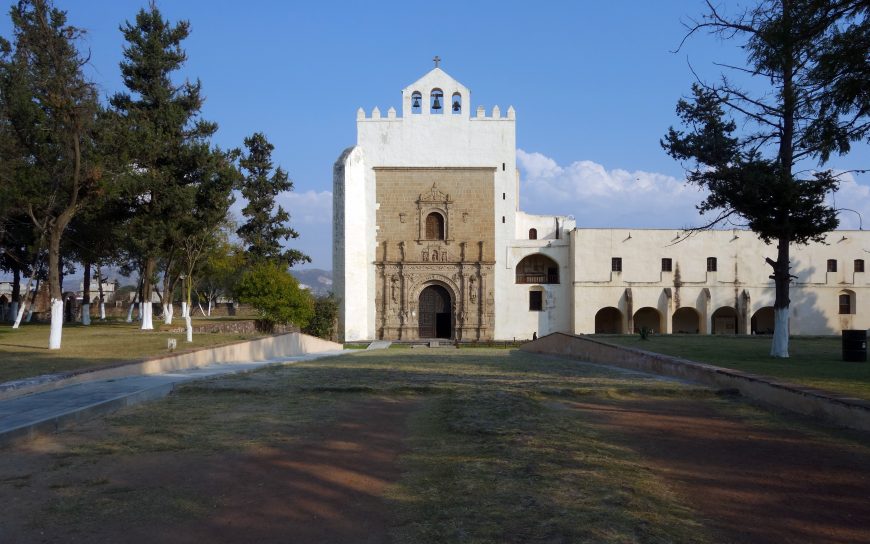
Instead, their first exposure to the new conquerors was often within the large walled complexes called conventos (missions). Built by indigenous populations alongside mendicant friars (who were the mendicant friars?), these compounds contained a church, cloister, patio (also known as an atrium), and an outdoor chapel. Within the conventos indigenous people were baptized and taught the tenets of the Christian faith. The outdoor walled atrium hosted autos (religious plays) as well as religious processions that were staged in a counter-clockwise direction, imitating the direction of Nahua rituals (the Nahua are an indigenous people of Mexico and El Salvador).
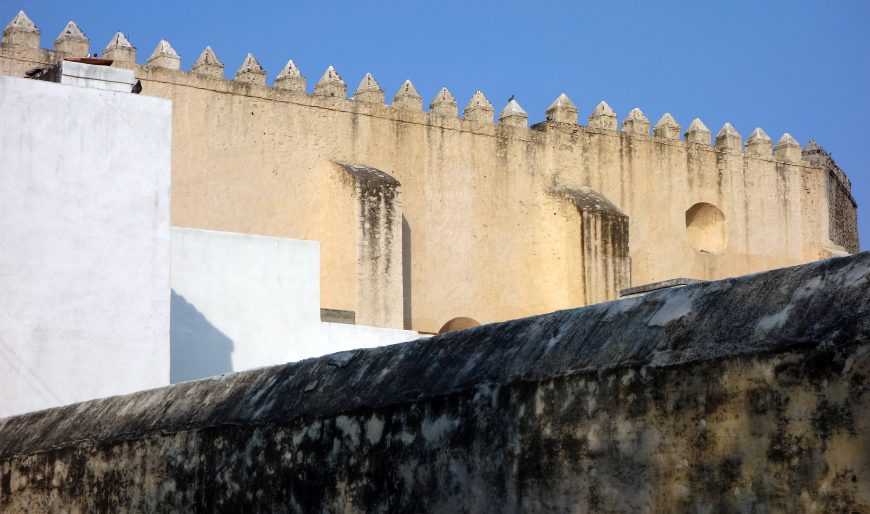
One of the most celebrated Mexican conventos is the Augustinian mission of San Agustín de Acolman (Acolman was a Nahua village located just north of Mexico City). Built in the mid-sixteenth century, the complex features a rusticated façade with boldly projecting stones, and a crenellated (notched) roofline, giving it a fortress-like appearance (see image above). This architectural style was common among the conventos of New Spain (the former Spanish colony that is now Mexico, Central America, and the southwestern United States). San Agustín de Acolman’s architectural style suggests a protective function, and may have referenced the temple of Jerusalem, celebrating Mexico as a “New Jerusalem” where the Christian faith could flourish.
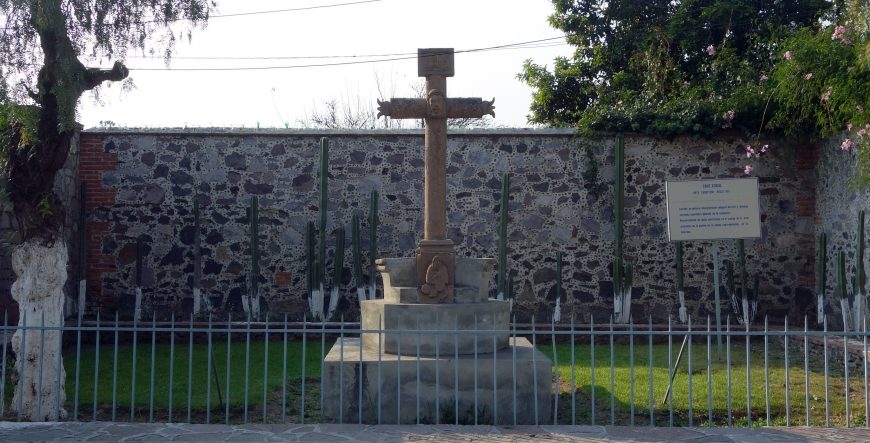

The Atrial Cross at Acolman
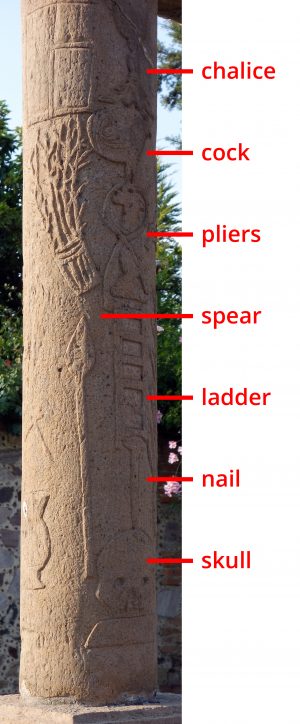
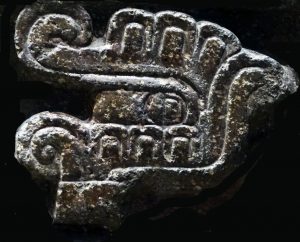
The remainder of the shaft features the Arma Christi (literally, “weapons of Christ,” the objects associated with the Passion) including a chalice, cock, pliers, spear, ladder, nail, and a human skull. These objects relate to the story of Christ’s entry into Jerusalem and his suffering at the hands of the Roman soldiers before his death on the cross and eventual resurrection. The objects are isolated from one another, displaying an affinity with the Aztec pictographic writing system. Each “instrument,” like an Aztec glyph, is boldly outlined and reduced to simplicity of forms for the sake of legibility. Within the ritual theater of the convento, the cross served as a teaching tool for new Nahua converts to learn an episode of the Passion story by metaphorically zooming in on the relevant “glyph.” For example, the spear would illustrate the story of the Roman soldier who pierced Christ’s side, and the ladder would narrate the deposition, or removal of Christ’s body from the cross.
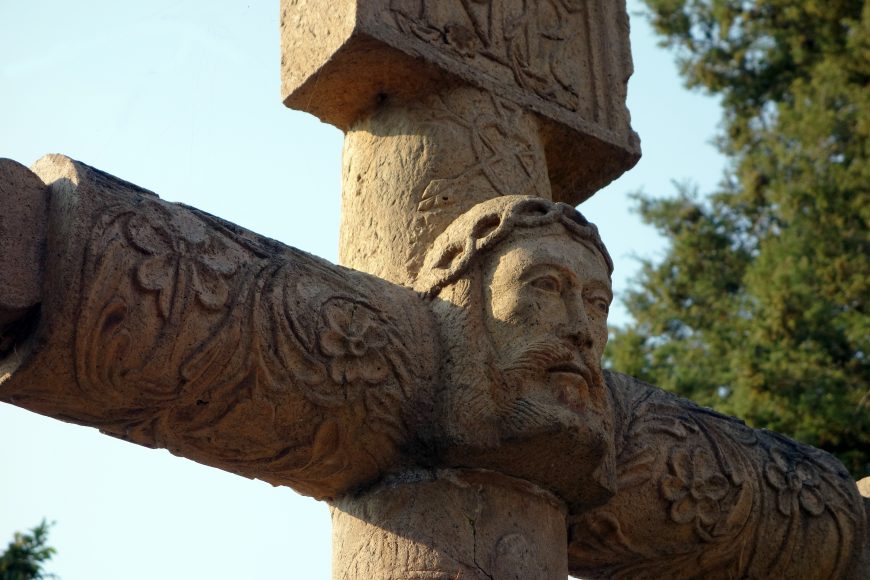
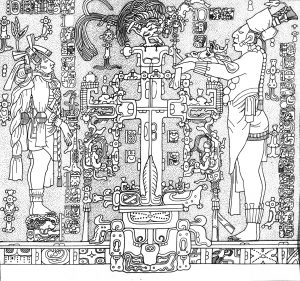
In addition to these symbols, the cross’s arms feature vegetal designs (see image above), a trope connected to the indigenous “World Tree,” the symbolic center of the universe from which the human race emerged (see image at left). Spaniards of the period noted that Indian images of the World Tree bore similarities to the Christian cross, surmising that Saint Thomas the Apostle had introduced the cross to the Americas in Biblical times, but that his efforts were destroyed by the workings of the Devil. In fact, the World Tree was an ancient symbol in Mesoamerica (modern-day Mexico and much of Central America), and had no original connection to Christ’s martyrdom. Rather than Christ’s body hanging on a cross as is typical for a Crucifix, the center of the Acolman cross features his boldly projecting face (see image above), perhaps also connecting it to the World Tree as a place of creation.
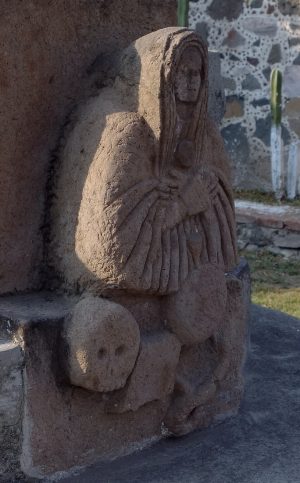
Alternatively, Christ’s face may be a rendering of the sudarium, or the veil that Saint Veronica used to wipe Christ’s blood and sweat as he carried the cross to his execution. The veil that became imprinted with his visage is one of the arma Christi which might explain its inclusion on the atrial cross. Finally, the base of the cross includes a rendering of the Virgin Mary alongside a human skull, a reference to Calvary, or “the place of the skull,” the burial place of Adam and the hill upon which Christ died (see image at left). This complex iconography derived from European print sources and was executed by native artists in native styles. This legacy is clearly visible when comparing the cross to pre-Hispanic Nahua monumental stone sculpture in the round that similarly features bold designs executed in varying relief.
A hybrid style
“Tequitqui” is one term given to this type of early colonial sculpture from Central Mexico that displays indigenous symbolism and style. Created as a collaborative effort, the hybrid atrial cross offers a fascinating look into the interactions between Spanish friars and Nahua converts in the years directly following the conquest of Mexico. While Spaniards wielded power as conquerors, indigenous people nevertheless played a major role in shaping the new colonial society. At Acolman, we can see these interactions at play, manifested in this masterfully carved monumental stone cross.
[1] INRI are initials for the Latin words that Pontius Pilate had written over the head of Jesus Christ on the cross (Iēsus Nazarēnus, Rēx Iūdaeōrum, Jesus the Nazarene, King of the Jews)
Additional resources:
Samuel Y Edgerton, “Christian Cross as Indigenous ‘World Tree’ in Sixteenth-Century Mexico” in Exploring New World Imagery, edited by Donna Pierce (Denver: Mayer Center for Pre-Columbian and Spanish Colonial Art, 2002), pp. 16–24.
Jaime Lara, City, Temple, Stage: Eschatological Architecture and Liturgical Theatrics in New Spain (Notre Dame: University of Notre Dame Press, 2004).


